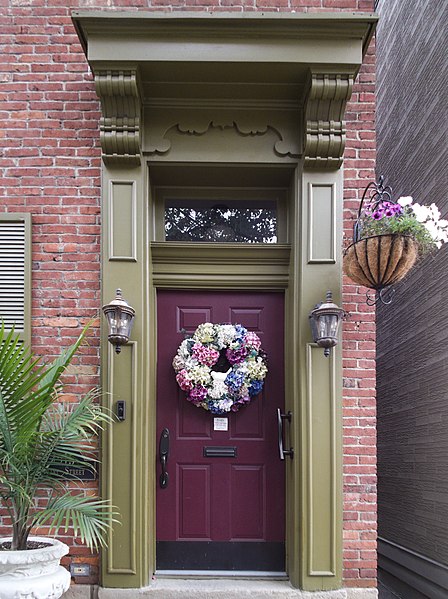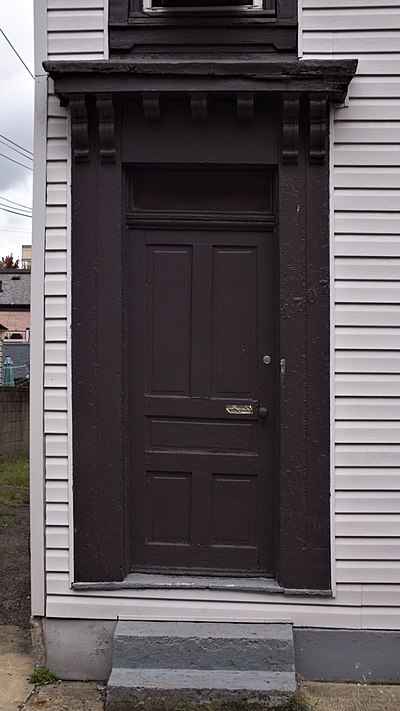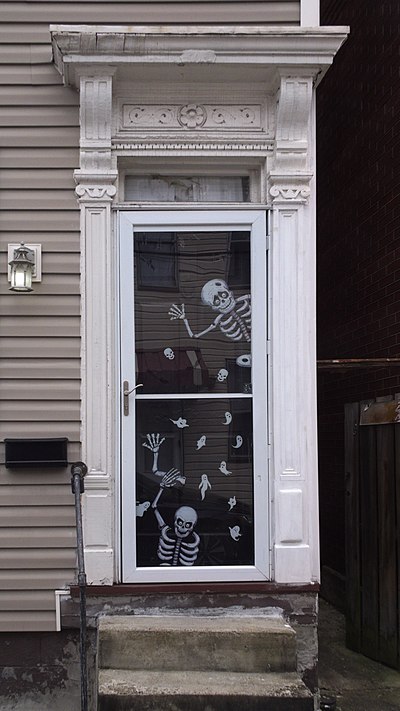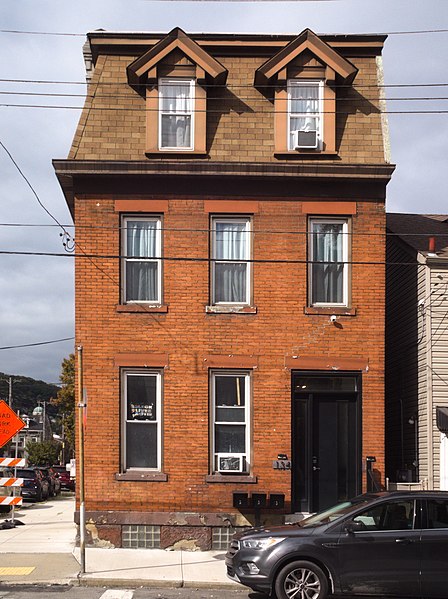
Another small celebration of the varieties of woodwork to be found on South Side houses.










According to old maps, this building was put up in the 1880s. It is typical of the Second Empire style as it trickled down to smaller buildings. Most of it is relatively plain, but note the elaborate brickwork of the chimneys. The dormers may be simplified replacements of the originals, but they harmonize well with the style of the building. Currently the building seems to have four apartments, but it may have been a private house. It is not large, but it stands on a block of much smaller frame houses and thus looks bigger than it is.




You probably thought old Pa Pitt had reached the frozen limit of esoteric obsession when he brought you large collections of breezeways. You were mistaken. With the long lens on his Fuji HS10 camera, he is able to pick out clear pictures of chimney pots, and he has always been fascinated by chimney pots. They are still found on some of the oldest houses in the neighborhood, and they come in a wonderful variety of shapes and decorations. Expect to see many more pictures of chimney pots, but these are a good start.








This building is an epitome of the history of the South Side. The first wave of immigrants after the original English and Scotch-Irish settlers was the Germans. There was a Turnhalle, a German athletic club, on this site by 1872, and probably well before; it was across the street from a German Evangelical church. That original Birmingham Turnverein was a frame building, but this splendid brick structure was put up some time a little before 1910. (If you enlarge the picture, you can see a pair of “BTV” monograms on the façade near the entrance.) Then came the influx of East Europeans, and many of the Germans moved out. This became a Lithuanian Hall; the German church across the street was demolished and replaced with a Ruthenian Catholic church. In the twenty-first century, we have all become antisocial, and clubs and churches have died; the building has been turned into apartments, as many similar buildings have been.

The double arch inside a single arch, with a circle to fill in the gap, is characteristic of the style of classically influenced Romanesque the Germans called Rundbogenstil, the round-arch style. It may not be exclusive to the Rundbogenstil, but Father Pitt likes to say the word “Rundbogenstil.” The B. M. Kramer and Co. building on the South Side, built as a beer warehouse, is one of the masterpieces of industrial architecture in Pittsburgh.